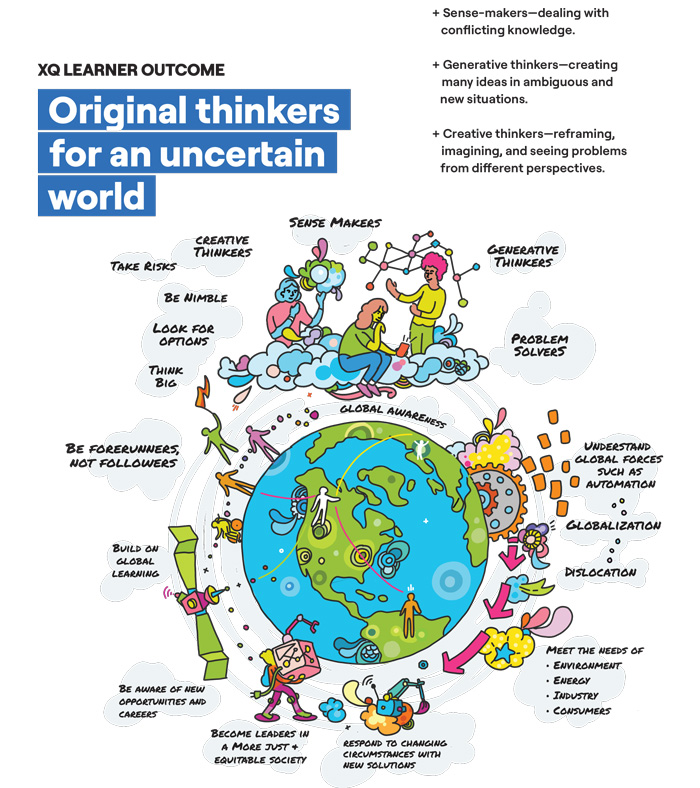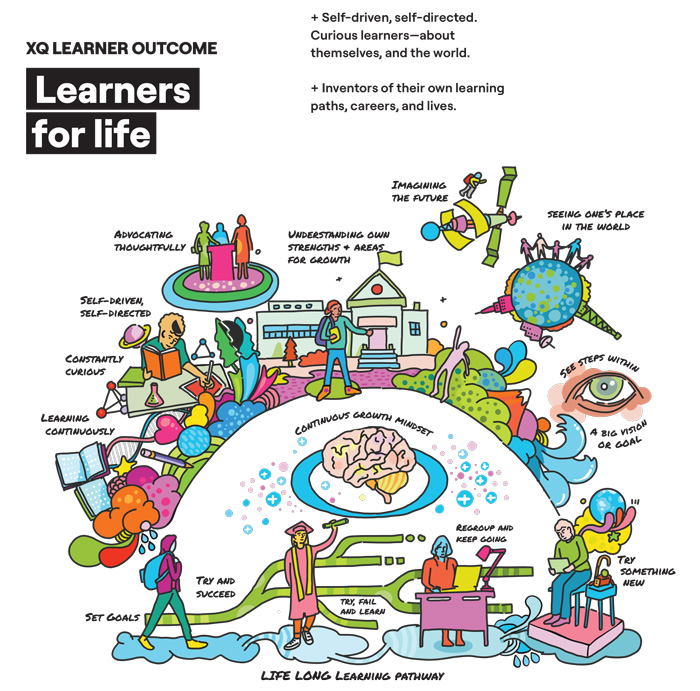Future-Proof Your Teen: 5 Game-Changing School Tips for Parents
5 things parents should look for in their kids’ high school classrooms to ensure they’re ready for the world.

Get stories like this delivered straight to your inbox. Sign up for The 74 Newsletter
Our young people are growing up at a time when the economy, the workforce and the environment are changing rapidly. Colleges and workplaces alike now value critical thinking. Teamwork is also crucial in professions ranging from laboratory research to marketing.
High schools are essential to preparing young people for these challenges, regardless of whether their future includes college, career or a combination of postsecondary plans. But how can families and students understand how any individual high school approaches learning?
While districts and states provide a variety of data points, many agree these metrics don’t paint a complete picture and don’t necessarily mean students are well-prepared for postsecondary life. Helping all students reach their full potential requires passionate and inspired teaching and meaningful learning experiences that encourage them to think critically. Schools should also empower teachers as professionals.
When those ingredients are combined, the sky’s the limit. As just one example, Alex Campbell’s sociology students at Elizabethton High School in Tennessee solved a cold case with project-based learning (and became the subject of the true-crime podcast series “Murder 101”). All high school teachers can tap into students’ natural curiosities in exciting ways that connect with the world around them — and prepare them for their lives beyond graduation.
XQ identified research-backed Learner Outcomes, or goals, that recognize the full range of knowledge, skills, habits and mindsets students need to be successful in life. The framework guides educators to transform teaching and learning. They’re also helpful for families looking for ways to determine if a particular high school fully prepares all students for the future.
Here are five things parents should look for in their kids’ classrooms to ensure they’re ready for the world.
1. Are students learning to be literate in the fullest sense? Do they know how to read information, understand it and apply meaning to it — with language, numbers, digital content and other subjects?

This is where the XQ goal, “Masters of All Fundamental Literacies” comes in. In addition to required subjects, such as English and math, students should learn how to interpret and use data, which is increasingly essential in many fields beyond the sciences. For example, at Círculos, one student made a documentary about “food deserts” — neighborhoods where residents have limited access to nutritious foods.
2. Can students think in ways that apply art, literacy, science, history, economics, math and STEM — and connect these disciplines?

This relates to “Holders of Foundational Knowledge.” The goal is to foster curious young people who are knowledgeable about the world: its history, culture, sciences and underlying mathematics, biology and cultural currency. They’re engaged participants vital to creating a more just and functional democracy.
3. Are students given opportunities to think creatively about subjects they’re passionate about? Can they also explore their interests in the “real world” through internships or partnerships with local businesses and community organizations, so they can think about future professions?

Students must be taught to be “Original Thinkers for an Uncertain World.” In our information age, students must learn to become sense-makers who can deal with conflicting knowledge and abundant data points. How do they know if something was generated by artificial intelligence? They also need to adapt to changing situations. For example, with XQ’s help, D.C. Public Schools are redesigning existing schools with new approaches, like having students build their own businesses and applying the U.N.’s Sustainable Development Goals.
4. Does the school foster collaborators who value the expertise of others? Are there group projects where students learn to be co-creators in what they bring and how they show up?

Successful high schools cultivate “Generous Collaborators for Tough Problems,” self-aware team members who bring their strengths to support others. At Iowa BIG, students responded to a devastating storm that hit the Cedar Rapids region and destroyed up to 70% of the local tree canopy. Students contracted with local chainsaw artists to turn fallen wood into sculptures and used the funds to “re-leaf” the damaged tree canopy.
5. Do students understand their own strengths and areas for growth? Is there an opportunity for them to reflect on their learning?

We want to ensure that schools are nurturing “Learners for Life.” Any high school’s role is to foster a love for learning and the ability to keep learning. Students must become self-driven, self-directed, curious learners — about themselves and the world. Many great high schools have capstone projects where students present what they’ve learned and then celebrate their growth and achievements. At New Harmony High School, student presentations showcase the projects and issues they’re passionate about, including climate change, immigration and gun violence.
Preparing students for the future is no easy feat when so many industries, from STEM to manufacturing and media, are in a constant state of flux. But with a nimble approach to learning and foundational knowledge, high schools can help their students feel equipped to succeed on whatever paths they choose. Next month, we’ll give more tips for looking at what a high school’s design says about how students learn.
Want to learn more about innovative ways of reaching high school students? Subscribe to the XQ Xtra, a newsletter that comes out twice a month for high school teachers.
Disclosure: The XQ Institute is a financial supporter of The 74.
Get stories like these delivered straight to your inbox. Sign up for The 74 Newsletter

;)